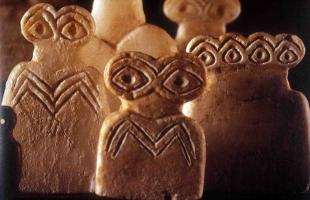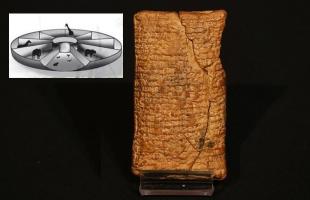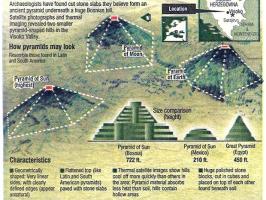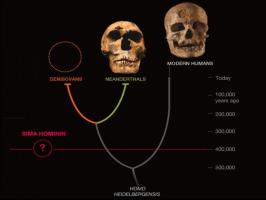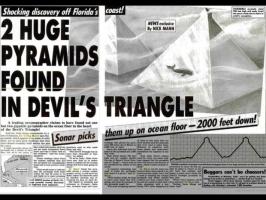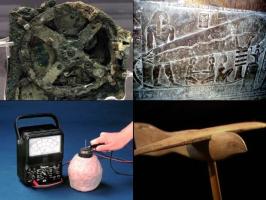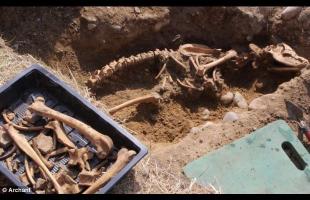Copy Link
Add to Bookmark
Report
dictyNews Volume 18 Number 05

Dicty News
Electronic Edition
Volume 18, number 5
March 30, 2002
Please submit abstracts of your papers as soon as they have been
accepted for publication by sending them to dicty@northwestern.edu.
Back issues of Dicty-News, the Dicty Reference database and other useful
information is available at DictyBase--http://dictybase.org.
=============
Abstracts
=============
A putative serpentine receptor gene tasA required for normal morphogenesis
of primary stalk and branch structure in Polysphondylium pallidum.
Yoshinori Kawabe, Hidekazu Kuwayama, Takahiro Morio, Hideko Urushihara, and
Yoshimasa Tanaka
Gene 285, 291-299 (2002)
Abstract
The fruiting body of Polysphondylium pallidum is composed of
whorls of branches along the axis of a primary stalk. In the course of
fruiting body formation, the interval between neighboring whorls and the
number and the spacing of branches in a whorl are highly regulated. In this
study, using REMI (restriction enzyme mediated integration) mutagenesis, we
have obtained a mutant (strain M6226) with thicker and aberrant primary
stalk. The gene responsible for the mutant phenotype, confirmed by
homologous recombination, encodes an ORF with 383 aa residues (46.3 kDa)
and was named tasA (thick and aberrant stalk A). TasA is highly homologous
to Dictyostelium discoideum cAMP receptors. A tasA transcript is expressed
strictly at the late aggregation stage. Cells expressing a tasA::gfp fusion
DNA are localized at the posterior region of the primary sorogen where
secondary sorogens and branches originate. This result indicates the
existence of "prebranch" and "pretrunk" regions in P. pallidum instead of
the prespore and prestalk regions in D. discoideum. The analyses of the
gene disruptant and chimeric fruiting bodies also suggests that TasA
affects the normal morphogenesis of the primary stalk and the process of
cell differentiation into prebranch cells, but not into spore or stalk
cells directly.
-----------------------------------------------------------------------------
Expression and One Step Purification of a Developmentally Regulated Protein
from Dictyostelium discoideum
Muatasem Ubeidat and Charles L. Rutherford*
Biology Department, Molecular and Cellular Biology Section, Virginia
Polytechnic Institute and State University, Blacksburg, VA 24061-0406, USA
Accepted for publication in: Protein Expression and Purification
ABSTRACT
To overexpress Dictyostelium 5NT, a 1506 bp fragment of the cDNA encoding
the gene was cloned into a pET32c+ vector and expressed in the E. coli
expression host BL21 CodonPlus"!(DE3)-RIL by Isopropyl-b-D-thiogalactoside
(IPTG) induction. Maximum induction of insoluble recombinant protein was
reached after incubation of the culture for 3 h with 1.0 mM IPTG. High
level of 5NT expression was confirmed by SDS-PAGE and immunoblotting
analysis. The recombinant 5NT was purified to homogeneity by a one step
purification using continuous-elution electrophoresis. Ten mg of
recombinant 5NT was purified per liter of growth medium. To achieve one
of the goals of this study, polyclonal antibody against the recombinant
5NT was produced in a rabbit. We have shown previously by Northern analysis
and reporter gene analysis that 5nt is developmentally regulated. In this
report we used polyclonal antibody against the recombinant protein in
Western analysis of membrane protein extracts from different developmental
stages of Dictyostelium. 5NT protein levels were first detected at the
tight aggregation stage of development. Thus, there is no significant
delay between transcription and translation of 5nt.
-----------------------------------------------------------------------------
A novel disintegrin domain protein affects early cell type specification and
pattern formation in Dictyostelium.
Timothy R. Varney, Hoa Ho, Chere Petty, and Daphne D. Blumberg
Department of Biological Sciences, University of Maryland Baltimore County,
1000 Hilltop Circle, Baltimore, Maryland 21250
Development, in press
SUMMARY
The cellular slime mold, Dictyostelium discoideum is a non-metazoan
organism yet we demonstrate here that a disintegrin domain containing
protein, the product of the ampA gene, plays a role in cell type
specification. Disintegrin domain containing proteins are involved in
Notch signaling in Drosophila and C. elegans by an ectodomain shedding
mechanism that depends on a metalloprotease domain. The Dictyostelium
protein lacks a metalloprotease domain. Nonetheless, analysis of cell
type specific reporter gene expression during development of the ampA null
strain identifies patterning defects that define two distinct roles for the
AmpA protein in specifying cell fate. In the absence of a functional ampA
gene, cells prematurely specify as prespore cells. Prestalk cell
differentiation and migration are delayed. Both of these defects can be
rescued by the inclusion of 10% wild-type cells in the developing null
mutant aggregates, indicating that the defect is non-cell autonomous. The
ampA gene is also demonstrated to be necessary in a cell autonomous manner
for the correct localization of anterior-like cells to the upper cup of the
fruiting body. When derived from ampA null cells, the anterior-like cells
are unable to localize to positions in the interior of the developing mounds.
Wild-type cells can rescue defects in morphogenesis by substituting for null
cells when they differentiate as anterior-like cells but they can not rescue
the ability of ampA null cells to fill this role. Thus, in spite of its
simpler structure, the Dictyostelium ampA protein carries out the same
diversity of functions that have been observed for the ADAM and ADAMTS
families in metazoans.
-----------------------------------------------------------------------------
Nucleomorphin: A novel, acidic, nuclear calmodulin-binding protein from
Dictyostelium that regulates nuclear number
Michael A. Myre* and Danton H. O Day*
*University of Toronto at Mississauga, Department of Zoology, 3359
Mississauga Rd. Rm. 3030, Mississauga, ON. L5L 1C6 Canada
J. Biol. Chem., in press
Probing of Dictyostelium discoideum cell extracts after SDS-PAGE using
35S-recombinant calmodulin as a probe has revealed approximately three-dozen
Ca2+-dependent calmodulin binding proteins. Here, we report the molecular
cloning, expression and subcellular localization of a gene encoding a novel
CaMBP, we have called nucleomorphin, from D. discoideum. A ZAP cDNA
expression library of cells from multicellular development was screened
using a recombinant calmodulin probe (35S-VU1-CaM). The open reading frame
of 1119 nucleotides encodes a polypeptide of 340 amino acids with a
calculated molecular weight of 38.7 kDa, and is constitutively expressed
throughout the Dictyostelium life cycle. Nucleomorphin contains a highly
acidic glutamic/aspartic acid inverted repeat (DEED) with significant
similarity to the conserved nucleoplasmin domain, and a putative
transmembrane domain in the carboxyl-terminal region. Southern blotting
reveals that nucleomorphin exists as a single copy gene. Using gel overlay
assays and CaM-agarose we show that bacterially expressed nucleomorphin
binds to bovine CaM in a Ca2+-dependent manner. Amino-terminal fusion to
the green fluorescent protein showed that GFP-NumA localized to the nucleus
as distinct arc like patterns similar to heterochromatin regions. GFP-NumA
lacking the acidic DEED repeat still showed arc-like accumulations at the
nuclear periphery but the number of nuclei in these cells was increased
markedly compared to control cells. Cells expressing GFP-NumA lacking the
transmembrane domain localized to the nuclear periphery, but did not affect
nuclear number or gross morphology. Nucleomorphin is the first nuclear CaMBP
to be identified in Dictyostelium. Furthermore, this data presents the first
identification of a member of the nucleoplasmin family as a calmodulin-
binding protein and suggests nucleomorphin has a role in nuclear structure
in Dictyostelium.
-----------------------------------------------------------------------------
Dictyostelium EB1 is a genuine centrosomal component required for proper
spindle formation
Markus Rehberg and Ralph Grf*
Adolf-Butenandt-Institut / Zellbiologie, Ludwig-Maximilians-Universitt
Mnchen, Schillerstrasse 42, D-80336 Mnchen, Germany.
Mol. Biol. Cell, in press
EB1 proteins are ubiquitous microtubule-associated proteins involved in
microtubule search-and-capture, regulation of microtubule dynamics, cell
polarity and chromosome stability. We have cloned a complete cDNA of
Dictyostelium EB1 (DdEB1), the largest known EB1 homologue (57 kDa).
Immunofluorescence analysis and expression of a GFP-DdEB1 fusion protein
revealed that DdEB1 localizes along microtubules, at microtubule tips,
centrosomes and protruding pseudopods. During mitosis, it was found at the
spindle, spindle poles and kinetochores. DdEB1 is the first EB1-homologue
which is also a genuine centrosomal component, because it was localized at
isolated centrosomes that are free of microtubules. Furthermore, centrosomal
DdEB1 distribution was unaffected by nocodazole treatment. DdEB1 colocalized
with DdCP224, the XMAP215 homologue, at microtubule tips, the centrosome and
kinetochores. Furthermore, both proteins were part of the same cytosolic
protein complex suggesting that they may act together in their functions.
DdEB1 deletion mutants expressed as GFP or maltose-binding fusion proteins
indicated that microtubule binding requires homo-oligomerization which is
mediated by a coiled-coil domain. A DdEB1 null mutant was viable but
retarded in prometaphase progression due to a defect in spindle formation.
As spindle elongation was normal, DdEB1 seems to be required for the
initiation of the outgrowth of spindle microtubules.
-----------------------------------------------------------------------------
[End Dicty News, volume 18, number 5]









